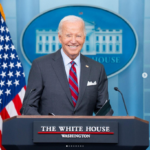After ensuring stability in the top hierarchy in the PMO, Narendra Modi focused on the staff at his residence – 7, Lok Kalyan Marg. The numbers were trimmed from 50 to around 20. This includes section officers, peons, and 1-2 undersecretaries. Then he looked at how to handle two crucial ministries, External Affairs and Internal Security. The centralised bureaucracy in the PMO was geared for efficient coordination with these ministries. External Affairs Minister S. Jaishankar continues to have priority access to the Prime Minister. According to sources, Gopal Baglayh, Pratik Mathur, and Vivek Kumar coordinate with the external affairs ministry. Over the next few months, two important civil servants in the PMO, Additional Secretary Bhaskar Khulbe, and Joint Secretary Brijendra Navnit will retire. However, given Khulbe’s efficiency, he may be retained in the PMO. But one isn’t sure how the work will be redistributed at the Joint Secretary level. We know that Modi is a champion communicator through social media like Twitter and Facebook. He uses it effectively to connect with the masses. It is, therefore, not surprising that Hiren Joshi, Officer on Special Duty, Information Technology, in the PMO was given additional charge of communication, and was promoted from Deputy Secretary to Joint Secretary. Joshi has worked with Modi since the days the latter was Gujarat Chief Minister. Yash Gandhi and Nirav Shah, who work under Joshi at the Undersecretary level and are the backbone of the PM’s communication strategy, were promoted as Deputy Secretaries. While Jaishankar is an important link on external affairs, National Security Advisor to the PM, Ajit Doval, still has the final say on internal and external security.
Recent Posts
© Copyright 2007 - 2024 Gfiles India. All rights reserved powered by Aerial Infotech.

Recent Posts
Related Articles
By the Way
Is NitishKumar suffering from dementia!
Written by Gfiles Team The whispers are growing into loud decibels. From the...
ByGfiles TeamDecember 28, 2024
By the Way
PMO overhaul
Written by Team Prime Minister Narendra Modi has reshuffled his office during the...
ByTeamMay 5, 2020
By the Way
Hole in Pocket
Written by Team Covid-19 has without doubt created havoc in India. It has...
ByTeamMay 5, 2020
By the Way
KAS : Murmu’s Challenge
Written by Team Girish Chand Murmu, a 1985-batch IAS (retd) officer of the...
ByTeamMay 5, 2020

























































